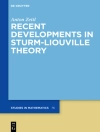The book ‘Trans Math – Innovative Solutions from Mathematical Technology’ has been conceived as a tool for the dissemination of scientific knowledge. This publication is addressed to those companies with innovation needs that could be met through mathematical technology.The book maps both existing and possible interactions and connections that enable technology transfer between Spanish mathematical research and industrial and business sectors. Businesses can determine the level of implementation and demand for such technology within their sector and understand the benefits and innovations achieved in other companies and industries with the application of mathematical techniques.The information is classified into eleven sectors of economic activity: Biomedicine & Health; Construction; Economics & Finance; Energy & Environment; Food; ICT; Logistics & Transport; Management & Tourism; Metal & Machinery; Public Administration; and Technical Services.
Table of Content
1 Introduction.- 1.1 Background.- 1.2 Mathematical technology in demand.- 1.3 Mathematical technology on offer.- 1.4 Economic activities involved in mathematical transfer.- 2 i-MATH Map of Demand for Mathematical Technology (Trans MATH Demand Map).- 2.1 Objectives and methodology.- 2.1.1 Objectives.- 2.1.2 Methodology: population, sample and questionnaire.- 2.2 Main results of the study.- 2.2.1 Characterisation of companies: by sector, company size and department.- 2.2.2 Knowledge and use of mathematical tools: CAD/CAE, statistics and operations research, and other mathematical techniques.- 2.2.3 Needs and human resources.- 2.2.4 Collaboration and outsourcing with universities and research centres.- 2.3 Conclusions.- 3 i-MATH Map of Supply of Mathematical Technology (Trans MATH Supply Map).- 3.1 Objectives and methodology.- 3.1.1 Objectives.- 3.1.2 Analysis of research groups.- 3.2 Overview of research groups.- 3.3 Mathematical techniques and MSC classification.- 3.4 Expertise by sector: consulting and training.- 3.4.1 Research activity from 2000 to 2010: overview and characterisation.- 3.4.2 Technological transfer: supply and experience.- 3.4.3 Biomedicine & Health.- 3.4.4 Construction.- 3.4.5 Economics & Finance.- 3.4.6 Energy & Environment.- 3.4.7 Food.- 3.4.8 ICT.- 3.4.9 Logistics & Transport.- 3.4.10 Management & Tourism.- 3.4.11 Metal & Machinery.- 3.4.12 Public Administration.- 3.5 Expertise in software development.- 3.6 Expertise in use of free and commercial software.- 3.7 Conclusions.












